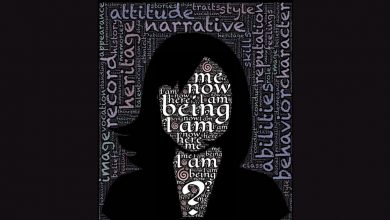Emotional Intelligence – the key to developing your intercultural competence
Emotional intelligence is essential to developing intercultural competence. When it comes to intercultural issues, we can't rely solely on our knowledge and skills to know what to do in any given situation. Rather we need to rely on our emotional radar, as it will be a more reliable indicator of how our words and actions are being interpreted by the others. The good news is, we all have a certain level of emotional intelligence and the ability to develop it further.

Why did I choose this tool? Although the research behind and the proven importance of emotional intelligence is widely recognized, there is still a gap between how relevant emotional intelligence has been proven to be, and how widely it is applied and especially how developed, in every-day life. This tool once more brings to light how essential it is, using examples from a field that seemingly has nothing to do with emotional intelligence (engineering). This tool can be used as a starting point to thinking about, applying and developing our level of emotional intelligence.
How does this apply to being a trainer? This tool is especially relevant to trainers because it clearly shows the link between intercultural competence and emotional intelligence. All of the subtopics in the intercultural competence (maintaining awareness of one’s own identity; show a willingness and ability to look at identity, culture and related aspects and dimensions from different perspectives; critically reflecting and distancing oneself from own perceptions, stereotypical constructions of reality; reflecting and using diverse ways and methods to increase self-awareness; being able to apply human rights principles; reflecting acceptance of ambiguity and change) can all be linked to emotional intelligence. With a healthy level of emotional intelligence, or emotional fitness, the above competencies will come naturally and easily.
Main content:
In the book “Emotional Intelligence”, Daniel Goleman defines 4 main domains of emotional intelligence:
Emotional Domain 1: Knowing One’s Emotions
Emotional Domain 2: Managing Emotions
Emotional Domain 3: Motivating Oneself
Emotional Domain 4: Recognizing Other’s Emotions
Emotional Domain 5: Handling Relationships
Emotional Domain 1: Knowing One’s Emotions
Knowing what you’re feeling, what you need, what you are striving towards consciously and subconsciously, why you’re feeling the way you are and most importantly what to do to feel consistently good and/or improve your emotional state is the first step in having an emotionally healthy and overall successful life. In addition to this, knowing ourselves intimately is the only way to genuinely understand and empathize with others, thus being able to be effective in an intercultural context.
Emotional Domain 2: Managing Emotions
Particularly when it comes to negative emotions, it’s essential to make sure that they don’t spiral out of control and have a negative impact on our lives as well as the lives of others. The way to do this, however, is not by repressing negative emotions and pretending that they don’t exist, but rather understanding, expressing and taking constructive action as needed. Constructively managing emotions is about listening to the emotions, but then deciding what to do rather than letting them hijack our brain through the amygdala and make the decisions and act on our behalf.
Emotional Domain 3: Motivating Oneself
Being able to motivate ourselves to work towards our goals, especially in the face of difficulties, negative emotions and other obstacles. Being able to manage our focus and direction, so that we can reach more long term and sustainable positive emotions (such as fulfillment) rather than just turning towards what will bring us instant gratification (such as the pleasure we get from food or drink).
Emotional Domain 4: Recognizing Other’s Emotions
Understanding what others are feeling, and especially what effect our words and actions may be having on them. For example, being able to understand when we have hurt someone, and being able to redirect our behavior to make them feel better and to ensure we don’t do it again. Or being aware of how people might be feeling in a social setting, and if there are interested in what they are telling them or if they wish they were somewhere else or discussing a different topic. Or being able to recognize when someone is feeling sad and despondent, and being able to say a few words that will elevate their mood and help them to keep going. On the flip side, this ability can protect us from someone who may have ill intentions, helping us to recognize what’s going on even before it’s obvious and extract ourselves from the situation before damage occurs.
Emotional Domain 5: Handling Relationships
This is an extension of domain 1 and domain 5, knowing one’s own emotions and recognizing other’s emotions. It’s about understanding both sides of the relationship coin and being able to make decisions and take actions that take all of the emotions and needs into account. It’s being able to communicate our own emotions and needs effectively, while taking into consideration the other person’s emotions and needs as well, sometimes supporting them to communicate when they find it difficult to do so. In addition to this, being generally happy and the content will inevitably influence the relationship in a positive way. Simply being happy can sometimes be the best thing you can do for your relationship.
Now how does this all apply to intercultural competence?
Here are some excerpts from a paper written by Marc J. Riemer and Detlev E. Jansen, showing the link between emotional intelligence and intercultural competence particularly in a professional setting.
“The personal culture of a receiver of communication acts as a filter through which he/she interprets the message. This filter may color the message to the point that the message received may not match the message sent. The source of communication will most often be within the context of the sender. However, to achieve an accurate, effective and efficient communication process, the communication received is ultimately more important than what the communicator thought was sent.”
If we know our own emotions and recognize the emotions of others, we will be able to more quickly realize when there is a gap between what we were trying to communicate and the message that was actually received. This is the most common cause of cultural misunderstandings, something was said and then was interpreted in a completely different way then the communicator intended. If we recognize these gaps early on, we can rephrase or even ask the person what their understanding is and ensure that we are on the same page. Doing this has the potential to avoid major misunderstandings and conflicts.
“Concerning intercultural communication, it has been stated that meaning exists in people, not in words. Cultural definitions provide a framework for meaning. How can a (person) develop intercultural communication competence? According to Hofstede, the acquisition of intercultural communication abilities passes through three phases: awareness, knowledge and skills. Brislin and Yoshida proposed a similar approach supplemented with a fourth phase – emotions – interjected between knowledge and skills: awareness, knowledge, emotions (including attitudes) and skills (involving visible behaviors)”.
If we think about the phrase “meaning exists in people, not in words”, and about the fact that it is the meaning we assign to words (or events) that create the emotions we associate to them, not the words or events themselves. When it comes to communication, we can be very cautious about the words we use, and yet this may still not suffice because the meanings that we and the other person place on those words will have a much greater effect on the result of our communication than the words themselves. Just imagine if you don’t speak Japanese, and someone went on and on in Japanese explaining something important to you. You would probably be very frustrated, knowing that because you don’t know the meaning of the words there is no way you can grasp what is being said. In this case, however, you are aware of this and can take action to clarify, such as getting a translator. The real unexpected problem comes when we think we are speaking the same language and have the same meanings, but we don’t. For instance, a woman telling a man that she wants to be in a committed relationship with him. “Committed relationship” to the woman can mean a warm, loving, supportive and fun relationship while the man can be envisioning a ball and chain and the permanent loss of his freedom. The reaction of the man to the request will then most likely be negative or avoidant, simply because of the meanings he has created, and of the woman will be encouraging it to go in that direction and wanting or expecting it, because of the meaning she has created.
“Awareness is the starting point. Hodstede suggested that cultural conditioning is similar to computer programming; in this case mental programming. (People) need to understand that they each carry particular mental software because of individual upbringing and that others brought up in different environments carry different mental software. Without awareness, a person may travel around the world feeling superior and remaining deaf and blind to all clues about the relativity of one’s own mental programming”.
The only way to avoid being “deaf and blind to all clues about the relativity of our own programming” is to have a consistent desire to raise our level of awareness about ourselves and others. It is to be open to questioning even our most deeply held beliefs and to accept also that our way of thinking and our beliefs, particularly when they go unquestioned and unchecked, will always be subject to our own programming. We need to be able to value learning (aka raising our level of awareness) more than our desire to be right and to be certain about everything we know. To always be capable of asking “what else could this mean”, and always be able to listen to a point of view that is different to ours, even if it has the potential to shift a belief or mindset that we have always held.
“Knowledge for interaction with other cultures: Hofstede suggests that one has to learn about these cultures. He states that culture is a collective phenomenon and describes a culture based on their values, rituals, heroes and symbols. Hofstede suggests learning about a culture’s symbols, heroes and rituals and to understand the differences in values – even if these values may never be shared.”
By understanding the values, rituals, heroes and symbols of another culture, we can begin to understand what means what when it comes to their perspective, view of themselves and view of the world. Once we understand what’s important to them, what they love and what they hate, we can connect with them on a deeper level. Always bear in mind that understanding doesn’t necessarily mean agreeing with, accepting or adopting. A lot of conflicts can come from thinking we need to either accept or reject everything we see or are exposed to, but this is an illusion. There is a third way, and that is just to focus on understanding. The correct course of action, if any, will come after we’ve taken the time to understand.
“Even culturally homogenous groups will read emotions differently. This non-verbal communication component has a major impact on intercultural communication. As we all utilize this subtle and unconscious act of communication and because it is culturally specific, any training in intercultural communication will necessarily incorporate this factor.”
Whether we realize it or not, our emotions are the primary drivers of our behavior and decisions, and emotions are often communicated non-verbally. Taking the time to understand the emotional factor in all its shapes and forms is time well invested because we start to view ourselves and others differently. We can pause and ask why, instead of just judging ourselves or others for our behavior. Instead of thinking “I’m such a loser I spent the whole day on the couch watching TV” we can instead ask “what was I feeling that caused me to turn to the TV all day, what was I trying to distract myself from?” Or instead of saying “how could she lash out like that, she’s such a bitch” we might instead ask “what was she feeling at that moment that might have caused her to lash out like that”. We are then less vulnerable to the rhetoric and manipulation of political agendas, that would try to pitch us as one “culture” against “the other”. And when we understand that negative behavior is inevitably a result of negative emotions, we can start to address the emotions for more lasting results. If for instance, the answer to the above question was “she wasn’t feeling safe, that’s why she lashed out” our response can be “what can I do to make her feel safe” rather then telling her to never lash out like that again, potentially amplifying the problem.
“A sufficient degree of empathy is required to sustain intercultural communication, although empathy’s status as a learned skill, trait or contextually emergent relational state has been discussed. Empathy is a vital aspect of EQ and is a learnable skill. Furthermore, it has long been considered a central intercultural competency. Empathy can help maintain and advance intercultural communication, given any communication must be within the cultural context of those communicating and which can alter the message sent/received.”
The best way to develop empathy is by learning to understand and be kind and accepting of ourselves first of all. Someone who doesn’t consider themselves and their emotions to be of any importance will not be able to genuinely empathize with another. Improve your relationship with yourself, and your relationship with others will follow suit. The next step is then to become genuinely curious about other people, particularly those from a different culture or background. What do they experience daily? What are their hopes, their dreams, their fears? What keeps them up at night? What gives them cause for celebration? By first deeply caring about and understanding ourselves, and secondly being curious about others, the differences and similarities between us, we will find ourselves naturally having empathy and understanding for others, and the intercultural competence will come naturally to us.
Reflection questions:
On a level of 1 – 5, how well do I think I do in the 5 domains of emotional intelligence?
Emotional Domain 1: Knowing One’s Emotions
Emotional Domain 2: Managing Emotions
Emotional Domain 3: Motivating Oneself
Emotional Domain 4: Recognizing Other’s Emotions
Emotional Domain 5: Handling Relationships
For the ones that I scored higher on, how did I develop myself in that domain? What resources did I use? What experiences did I have? Have I had them since I was a child, or did I develop them later on in life?
For the ones that I scored lower on, what can I do to develop myself further in that domain? Thinking about the resources and experiences that have helped me in the other areas in the past, how can I use them today to get the same result?
What might be holding me back from scoring higher in those areas? Is there any pain or any wounds that aren’t healed that are closing me off from my own emotions, or that of others? If so, what kind of support do I need to heal in those areas?
How will developing myself in these areas benefit my personal and professional life? How will it build my intercultural competence and my relationship with people in general (since we are all different in some way)?
What are some problems that seem unsolvable to me now, that could be solved by me developing my emotional intelligence? What can my life look like then?
Exercises:
How to apply it in everyday life:
Throughout a lot of our lives we tend to have things “happen to us”, and then we react to them. The truth is however that we always have a choice of how we want to react, we just tend to react automatically rather than thoughtfully making sure that we will be happy with our choice later on.
The next time something happens and you feel the instinct to react or respond automatically, take a moment to ask:
- Will this reaction give me the result that I want?
- Will it make things better?
- Will it make things worse?
- Who do I want to be right now?
- Does this reaction reflect that?
- What could be the alternative reactions that I haven’t considered yet?
- How can I use this moment to improve something in my life, rather than make it worse?
- Do I always react this way? If so, do I like the results, or is it worthwhile to change direction?
Doing this consistently will make it easier and more natural, and soon you will find yourself living a life that is conscious and chosen and getting far better results because of it.





